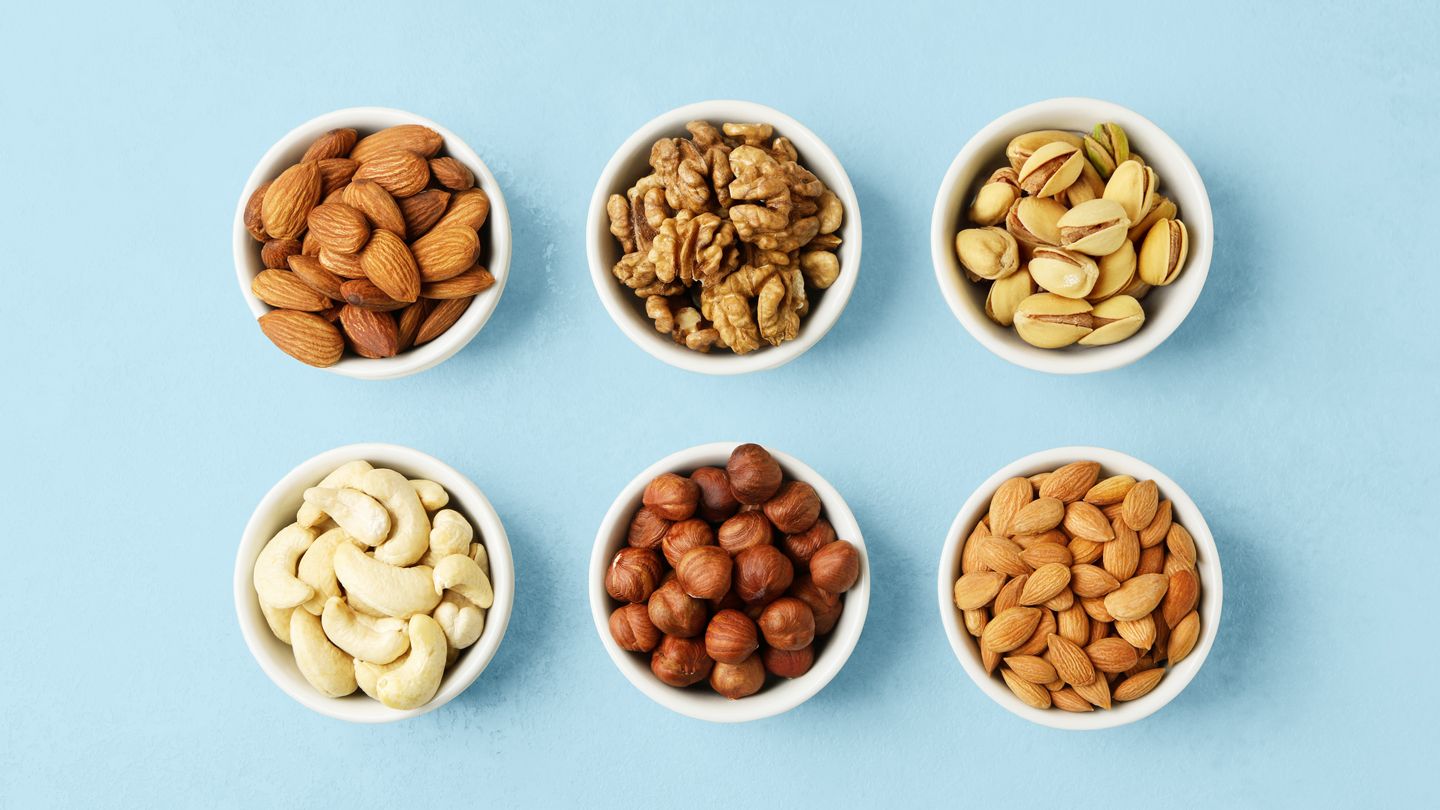3. Pistachios
Serving size: About 49 nuts
“Pistachios’ trio of fiber, protein, and good fats help keep you fuller longer, making them a smarter bet than carbohydrate-heavy snacks,” Dobbins says.
They also have antidiabetic properties, improve cardiovascular health, reduce inflammation, help control appetite, and reduce oxidative stress.
4. Peanuts
Serving size: About 28 peanuts
Peanuts may also be a boon to heart health. Nut consumption, including peanuts, is linked with a lower risk of heart disease. And peanuts, in particular, can effectively reduce LDL cholesterol.
Keep in mind that how nuts are prepared affects their nutritional value. Avoid nuts that are coated in sugar or salt, which can negatively affect your blood pressure, Dobbins says. Chocolate-covered peanuts, in particular, are high in carbs and not the best option when you have diabetes, Dobbins says.
5. Hazelnuts
Serving size: About 21 nuts
Palmer recommends including hazelnuts in savory dishes, mixed into veggie patties or loafs, roasted vegetable dishes, pastas, and on top of green salads.
6. Cashews
Serving size: About 19 nuts
In addition to being a source of heart-healthy fat, cashews pack a wealth of minerals, Palmer says. A 1 oz serving of cashews supplies 67 percent of your daily value (DV) for copper, 18 percent of your DV for magnesium, 15 percent of your DV for zinc, and 9 percent of your DV for iron. These minerals are all involved in blood sugar metabolism and regulation in the body.
Cashews make a good snack option for people with diabetes because they pack fiber, protein, and healthy fats, Palmer says. One serving of cashews has 1 g of fiber, 4 g of protein, and 13 g of total fat.
7. Pecans
Serving size: About 19 nuts
Pecans are similar in texture and taste to walnuts, Palmer says. So, you can easily add them in place of walnuts in recipes like pasta, pesto, and oatmeal.
8. Macadamia Nuts
Serving size: About 11 nuts
Macadamias are not just for cookies. Buttery and rich-tasting, “macadamias are richer in total fat and calories [than other nuts],” Palmer says. “But the fat is primarily in the form of heart-healthy mono- and polyunsaturated fats.” A 1 oz serving of macadamias has 203 calories and 22 g of total fat. While monosaturated fats are considered heart-healthy, they’re still a type of fat. So, for this reason, you may want to keep portion sizes in mind.
As for how to eat them? “It’s true that most people equate macadamias with sweet treats, but they can also be delicious added to salads, grain bowls, slaws, breads, granola, cereals, and veggie burgers,” Palmer says.
The Takeaway
- Nuts can be a diabetes-friendly snack because they’re high in protein, healthy fats, and fiber, and they’re low in carbs, all of which can help with blood sugar management.
- Cashews and almonds are rich in magnesium, a nutrient that people with diabetes often are deficient in. Magnesium can support healthy blood pressure and blood sugar levels.
- Walnuts, pistachios, and peanuts, in particular, can help you feel full longer, potentially helping with weight management.
- When shopping for nuts, try to stick with dry-roasted or raw versions without the added salt or sugar. Chocolate-covered varieties, for example, tend to have excess calories and fat, which can negatively affect blood sugar.
Read the full article here




